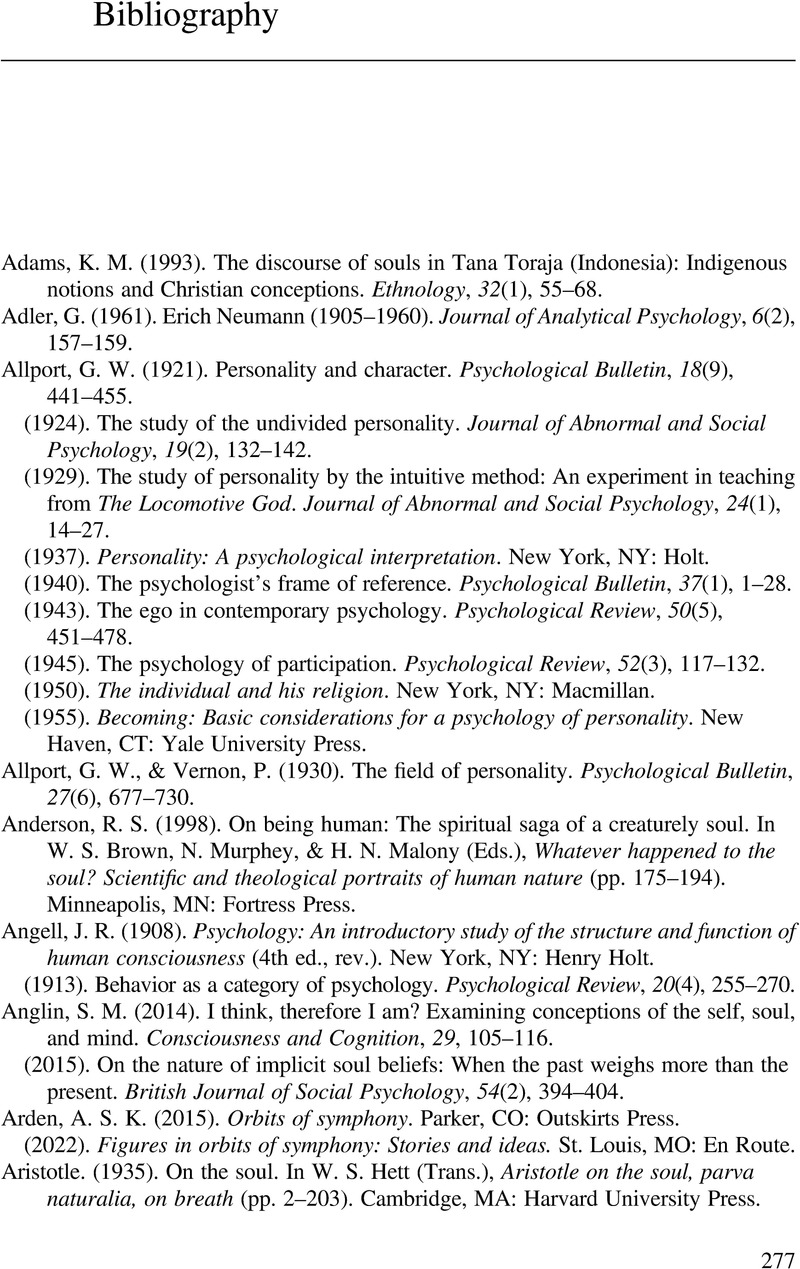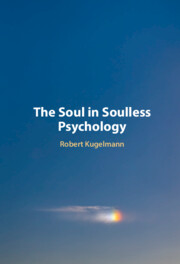Book contents
- The Soul in Soulless Psychology
- The Soul in Soulless Psychology
- Copyright page
- Contents
- Preface
- Acknowledgments
- 1 Reintroducing the Soul
- 2 Psychology without a Soul
- 3 Dissenters I
- 4 Dissenters II
- 5 Substitution
- 6 Innovation
- 7 Restoration
- 8 Historical Psychologies of the Soul
- 9 Soul as a Psychological Category
- Bibliography
- Index
- References
Bibliography
Published online by Cambridge University Press: 10 February 2023
- The Soul in Soulless Psychology
- The Soul in Soulless Psychology
- Copyright page
- Contents
- Preface
- Acknowledgments
- 1 Reintroducing the Soul
- 2 Psychology without a Soul
- 3 Dissenters I
- 4 Dissenters II
- 5 Substitution
- 6 Innovation
- 7 Restoration
- 8 Historical Psychologies of the Soul
- 9 Soul as a Psychological Category
- Bibliography
- Index
- References
Summary

- Type
- Chapter
- Information
- The Soul in Soulless Psychology , pp. 277 - 308Publisher: Cambridge University PressPrint publication year: 2023



